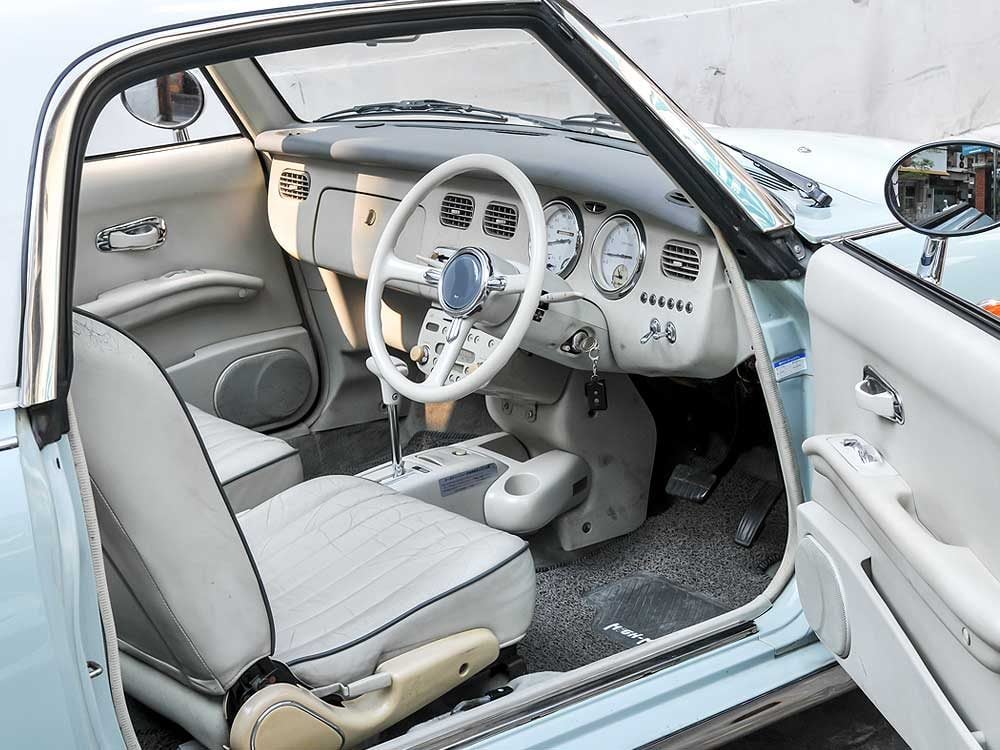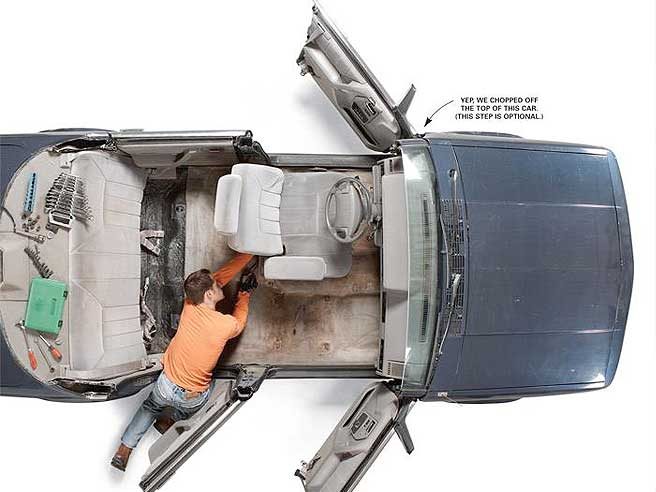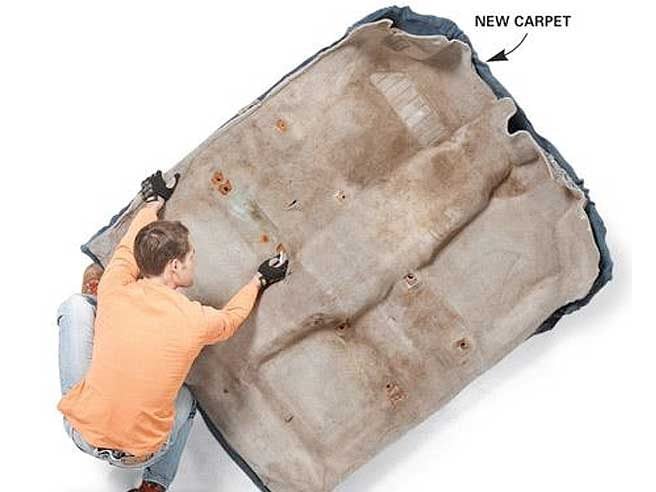
Buy pre-formed car carpet
You got a great deal on a used car, but the carpeting in the car is simply a disaster. If it’s too far gone for stain removers, new carpeting is the best solution. You can buy pre-formed carpet specifically for your car’s make, model and colour and replace it yourself. In most cases, it’ll only cost about $200 and take an afternoon to install.
Shop for carpet at an auto parts store or from an auto carpet website. Make sure the carpet you buy is custom moulded to fit your car’s floor pan and hump. Higher-quality carpets include original factory features like a heel pad under the accelerator and brake pedal. Most manufacturers offer a “mass backing” that duplicates the padding and rigidity of the factory carpet, and an economy “poly” backing. Choose mass backing if you plan to keep the car and poly if you’re going to sell it in the near future.
When the carpet arrives, unroll it and let it sit on a flat surface for at least two hours to lose its curl. While the carpet is “uncurling,” start removing the trim and seats to expose the old carpet for removal.
Required tools:
Have the necessary tools for this DIY car maintenance project lined up before you start-you’ll save time and frustration.
* Socket/ratchet set
* 4-in-1 screwdriver
* Drill/driver, cordless
* Torx bit
* Utility knife
* Wrench set
Required materials:
Avoid last-minute shopping trips by having all your materials ready ahead of time. Here’s a list.
* New carpet
* Rust converter
* Chalk
* Spray adhesive

Remove the seats and other important parts
Buy a shop manual that includes trim removal instructions and diagrams. Detach the door sill covers and remove the kick panels from the bottom of the front pillars.
Unscrew/unsnap any trim pieces from the seat tracks so you can get to the four nuts that secure the seat to the floor pan studs. You may also have to remove the seat belt anchor bolts (you may need Torx bits for these bolts). Disconnect any electrical connectors under each seat and lift the seats up and out (enlist a helper for this part). Then, remove the rear seat cushion. If you have a console, remove the shifter knob and all the fasteners. Lift the console out of the vehicle and pull out the old carpet and pad. But don’t throw out the old carpet just yet; you’ll need it.

Prep the area and install the new car carpet
Vacuum the floor pan and check for rust. Treat rusted areas with a rust converter (such as Loctite Extend or naval jelly) and paint them with a rust-inhibiting paint.
Using the old carpet as a template, trace the cutouts onto the new carpet with chalk. Next, move the carpet into the vehicle and double-check your cutout marks with the actual stud and anchor points on the floor pan. When you’re confident the marks are in the right places, cut X-shaped openings at each chalk mark. Fit the openings over the studs and feed the electrical cables through. Enlarge the openings to achieve a good fit.
Cut off excess carpet at the door sills and apply a light coating of spray adhesive such as 3M Spray 77 to the back of the carpet where it rides up onto the firewall. Then, reinstall the seats and trim and reconnect the electrical connectors. Enjoy the look and feel of your car’s new carpet and buy a set of no-spill coffee mugs to keep it pristine.
Check out more do-it-yourself car maintenance tips!
Explore Reader’s Digest Cars.